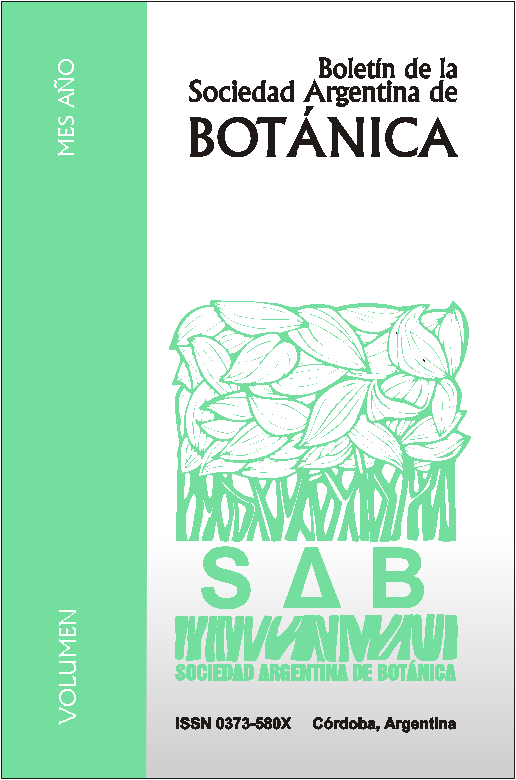Agriculture and livestock impacts on river floodplain wetlands: a study case from the lower Uruguay river
DOI:
https://doi.org/10.31055/1851.2372.v51.n2.14848Keywords:
Uruguay river, dyking, grazing, herbaceous communities, floodable lowlands.Abstract
Even though wetlands are very valuable environments, they suffer heavy exploitation and transformation processes that affect their biodiversity. The main goal of this study was to characterize the herbaceous plant communities associated with the southern Uruguay River flood plain. We focused on lowlands of two farms, one of which is surrounded by an embankment to prevent flooding. A random stratified sampling was performed in 72 plots. To detect distribution patterns and plant species associations we performed a Detrended Correspondence Analysis (DCA) and a Two-Way indicator species analysis (TWINSPAN). We could identify six groups of plots whose ordination patterns are related to the flooding preferences of dominant species. Herbaceous plant groups that develop in anthropically modified environments showed the highest overall richness and diversity with the ingression of invasive species but, they formed a homogeneous patch at a landscape scale. Plant associations with minor anthropic modifications showed lower richness and diversity values but, from a floristic point of view, they formed a heterogeneous mosaic.
Downloads
Published
Issue
Section
License
Provides immediate and free OPEN ACCESS to its content under the principle of making research freely available to the public, which fosters a greater exchange of global knowledge, allowing authors to maintain their copyright without restrictions.
Material published in Bol. Soc. Argent. Bot. is distributed under a Creative Commons Attribution-NonCommercial-ShareAlike 4.0 International license.





